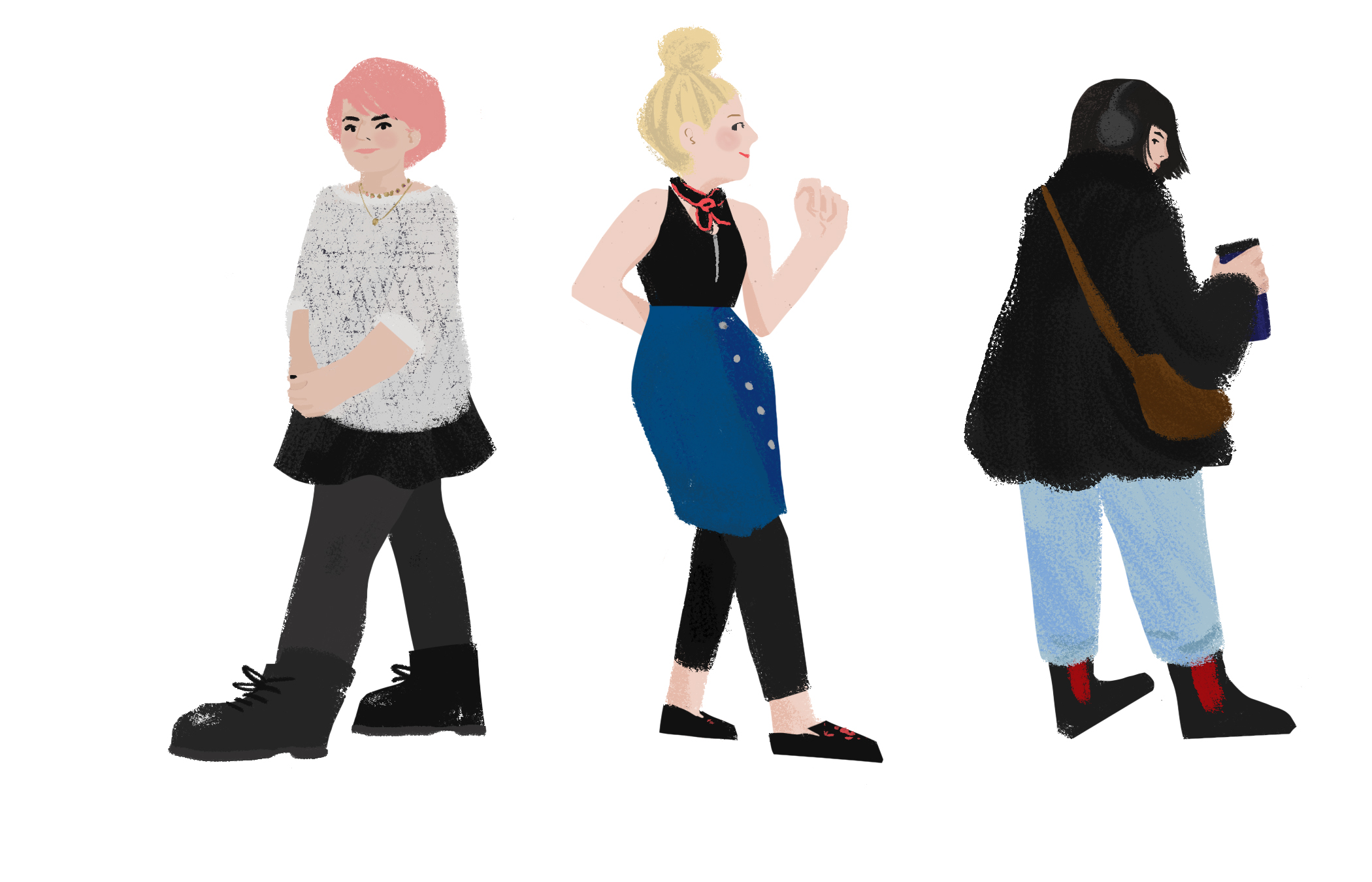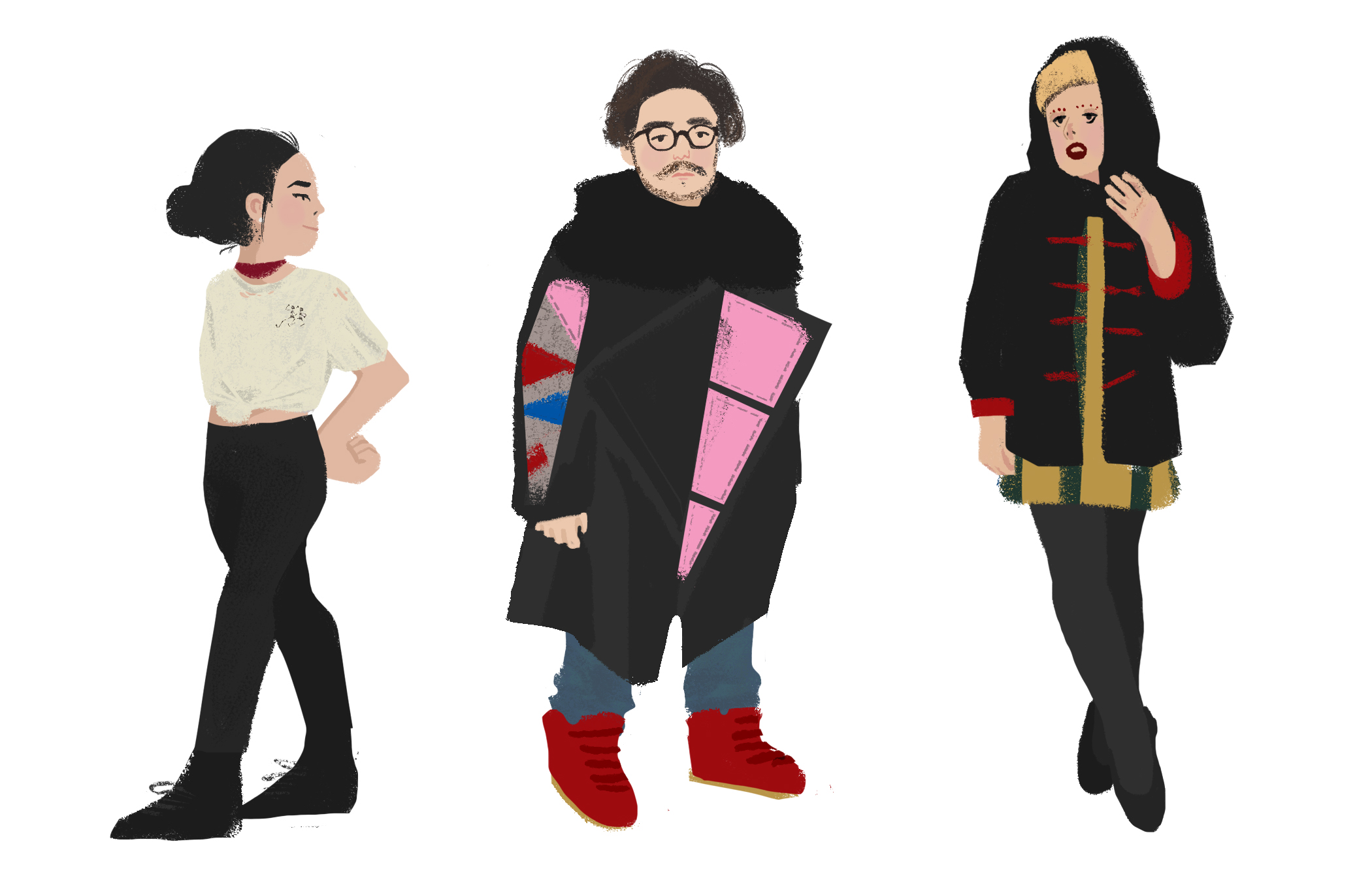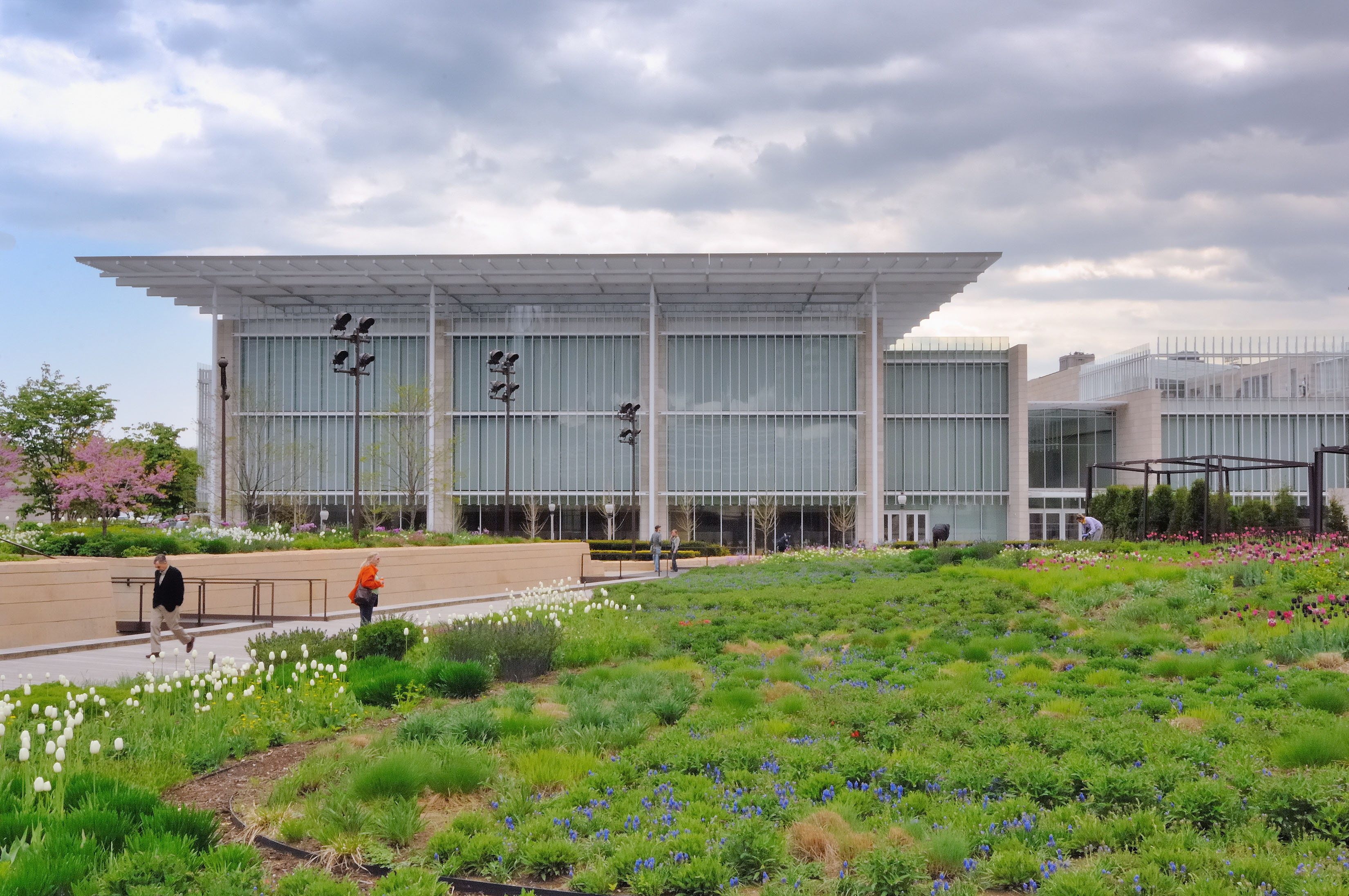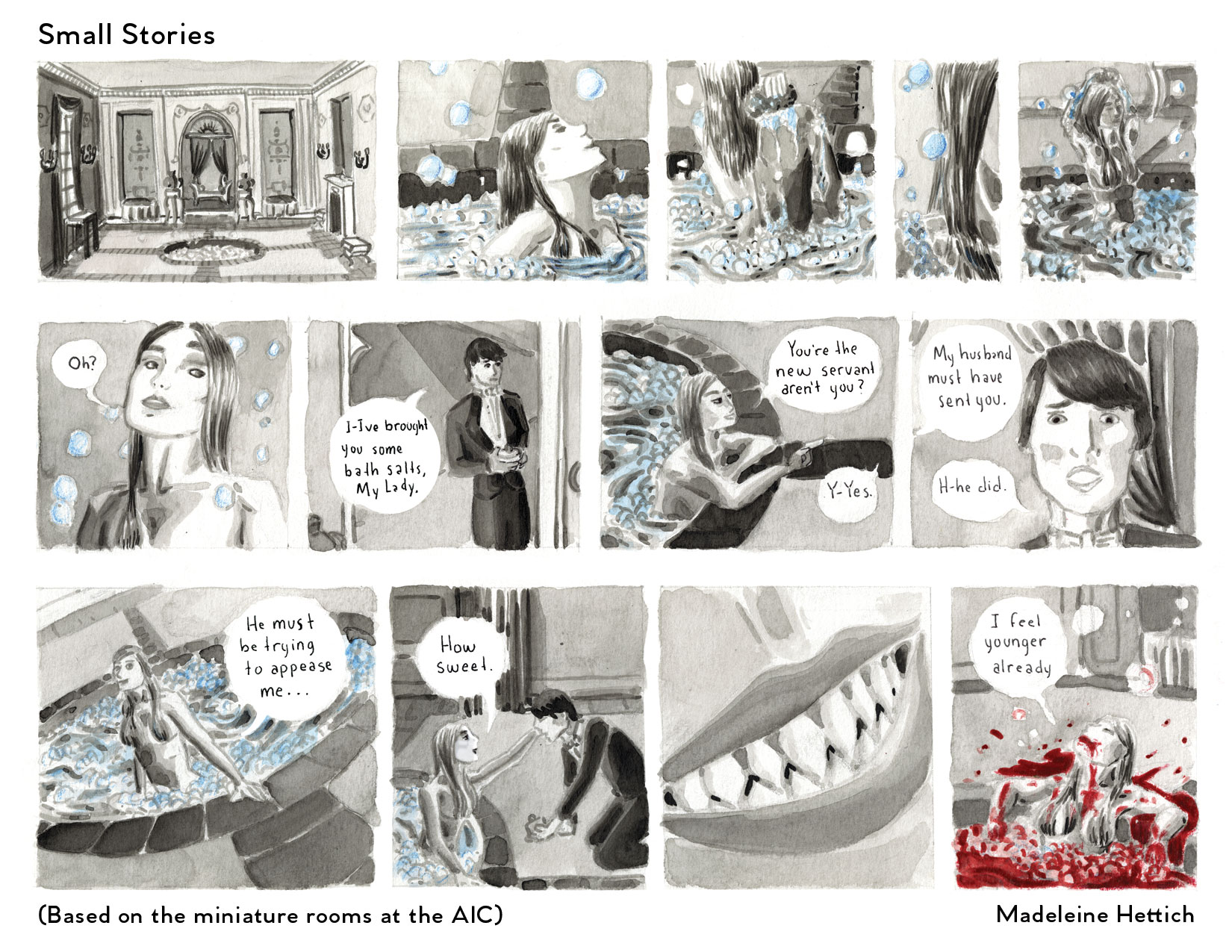
Fashion at the School of the Art Institute of Chicago (SAIC) is intense. The creative clothing choices students make have led to the rise of a unique art school aesthetic. Getting dressed for class is the kind of event that warrants sending outfit pictures to your friends for feedback. Though SAIC offers fashion courses, the level of interest in fashion and style throughout the school is impressive.
“This is my dad’s old t-shirt. It’s from the actual concert and all the holes are real,” said Kira Ryter, a first year in the BFA in studio program at SAIC, to F Newsmagazine. She likes to wear “authentic” clothing and thinks SAIC student fashion reflects the school’s creatively-charged environment.
Though not everyone has an interest in fashion and style, everyone who wears clothes participates in it. Apathy is as much of an artistic choice as any other. “I really like to work on my image and my aesthetic,” said Marina Cortes Calle, another first year in the BFA program, to F Newsmagazine. “[Style] is a performance, and a performance you have to work on.“
As an extremely unique learning environment that relies on risk and experimentation, SAIC is a breeding ground for exemplary style. The open-mindedness of the art school environment gives students a place to develop highly curated wardrobes, and take risks with their personal aesthetic. In combination with the limited budget of a college student and the mindset of an artist, SAIC students produce incredible fashion statements.
“When you’re on the train to school, everyone gives you the up and down, people are looking at you like, ‘What the hell are you wearing?’” said SAIC student Savanna Goble. “Then you get to school and everyone is like, ‘What the hell are you wearing, that looks awesome!’”

The larger creative community SAIC students look up to exemplifies the powerful relationship between artist and personal style.
Transgender activist and model Hari Nef said to i-D Magazine in a 2016 interview, “Clothes are always this thing that I used to tell stories about myself.” Nef was the first transgender model the talent company IMG Worldwide signed. She thinks fashion tells “stories that other people weren’t going to intuit about me, just purely on the basis of my body, or work, or cultural background.”
SAIC fashion culture is saturated with the manipulation of perception. The drive to communicate experiences and stories sometimes transcends art and shares a space with style.
“[Fashion] allows me to represent myself without using any type of verbal communication, thus creating a reputation for myself from the other side of the room,” Said BFA in studio student Noah Miller to F News. “SAIC is an art school so everything has to be intentional. As a result, my outfits have to be well thought out for any public appearance.”
A study from the University of North Carolina at Chapel Hill said our clothing choices “invoke tactile and kinesthetic cues that differentially affect behavior.” Style choices place people in a trial and error scenario, in which they determine what responses our clothing choices evoke and learn from reinforcement or rejection.
According to student Lena Geoffrey, SAIC is usually supportive of experimentation (whether it works out or not) in style: “I think there’s definitely a cool look at SAIC. In general I think there’s a lot of excitement and enthusiasm for any kind of experimentation. So, if you show up looking however you want to look, people are going to be excited for you.”
The well-dressed students aren’t necessarily the most talented in the class; some are hardly talented at all. However, the ability to compensate for talent through dress is a skill on its own. From a psychological standpoint, being well-dressed and confident in what we wear increases job performance as well as our chances of being hired. Theoretically, an artist can be less compelling than their classmate but make up for it with a well-curated personal aesthetic. Frustrating as this may seem, it speaks to the power in clothing.







